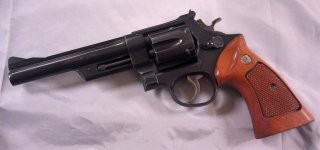donadler
SWCA Member
I have a 28-2 that looks to have been fired very little, barely a turn line, no bluing loss, etc.
Took it to the range for the first time, noticed the extractor rod was a bit loose, hand tightened it, seemed ok.
Loaded 6, closed it and went to index it, and it would spin backwards almost all the way around. Opened it up again, closed it, and after going backwards two chambers, it locked up ok.
Fired it VERY carefully, and it locked up tight and I could shoot it with no problems- put 120 rounds down range, but had to go thru the routine each reload of getting it to where it locked up and would not reverse spin.
Obviously not going to be my carry gun unless it is fixed. I am not the type to tinker in the guts of a gun, but I would like a reasonable explanation as to why this happens and what needs to be done to fix it before I decide to keep it or sell it, after disclosing the problem. Thanks for any responses.
Took it to the range for the first time, noticed the extractor rod was a bit loose, hand tightened it, seemed ok.
Loaded 6, closed it and went to index it, and it would spin backwards almost all the way around. Opened it up again, closed it, and after going backwards two chambers, it locked up ok.
Fired it VERY carefully, and it locked up tight and I could shoot it with no problems- put 120 rounds down range, but had to go thru the routine each reload of getting it to where it locked up and would not reverse spin.
Obviously not going to be my carry gun unless it is fixed. I am not the type to tinker in the guts of a gun, but I would like a reasonable explanation as to why this happens and what needs to be done to fix it before I decide to keep it or sell it, after disclosing the problem. Thanks for any responses.
Attachments
Last edited:

